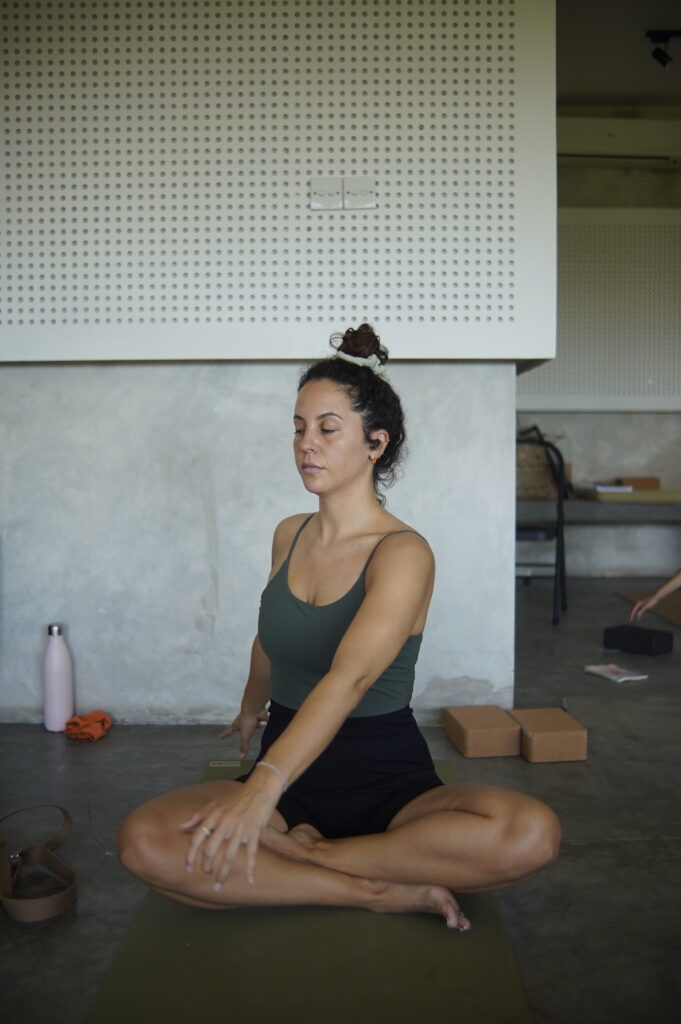In yogic philosophy, air is more than just a physical element that surrounds us. It plays a critical role in the flow of energy within our body and mind, governing essential functions such as breath, motion, and life itself. Known as “Vayu” in Sanskrit, air represents the dynamic and vital life force. According to yoga, understanding the different types of air in our body is key to achieving balance and harmony.
The Role of Air in the Five Elements Theory

In yoga and Ayurveda, the body is believed to be made up of five great elements (Pancha Mahabhutus): earth, water, fire, air, and ether. Air, or Vayu, is considered the second element, evolving from the infinite space of ether. As the potential within space activates, it transforms into air—representing motion, energy, and the force of life itself.
The Air Element (Vayu) and Its Importance in Yoga
Air is not just the wind that we feel externally, but the force behind every movement within us. This energy is essential to life, from the air we breathe to the flow of our thoughts, and even the circulation of blood. Yogic practices emphasize the importance of balancing this air element to maintain physical and emotional well-being.
The Five Types of Vayu in Yogic Philosophy
The ancient yogis identified five types of Vayu, or air, that flow through the body, each responsible for specific physical and energetic functions. These five Vayus govern the direction and movement of life-force energy within us.
Prana Vayu: The Life-Force Governing the Heart and Lungs
Prana Vayu is perhaps the most vital of the five Vayus. It governs the movement of air within the chest, affecting the heart and lungs. Prana is often translated as “life force energy” or simply “breath,” but it also refers to the energy that sustains all life. This inward-moving force nourishes the heart and lungs, keeping us alive and vibrant.
Balancing Prana Vayu through breathwork and mindful living is key to maintaining vitality and emotional balance.
Udana Vayu: The Upward Movement for Expression
Udana Vayu governs upward movement, particularly around the throat and head. It is responsible for speech, singing, and expression. This air is what allows us to communicate and share our thoughts with the world. It also plays a role in exhalation and upward energy flow.
When Udana Vayu is balanced, it promotes clarity of speech and expression. Imbalances may manifest as difficulty in expressing oneself or physical issues related to the throat.
Samana Vayu: Air Governing Digestion
Samana Vayu resides in the center of the body, governing digestion and the assimilation of nutrients. This balancing air energy ensures that food is properly digested and converted into energy. Samana’s role is to distribute energy evenly throughout the body.
When this Vayu is disrupted, digestive problems such as sluggishness or indigestion may occur.
Vyana Vayu: The Air That Pervades the Entire Body
Vyana Vayu circulates throughout the entire body, ensuring that life-force energy reaches every cell. It is responsible for the circulation of blood, the flow of energy through the nerves, and overall bodily movement.
A well-balanced Vyana Vayu ensures good circulation and mobility, while imbalances can lead to poor circulation, lethargy, or stiffness.
Apana Vayu: The Downward Flow of Energy
Apana Vayu governs the downward and outward movement of energy, particularly in the lower body. It is responsible for elimination, menstruation, and the sense of grounding. This Vayu connects us to the earth and helps us feel rooted.
When Apana Vayu is imbalanced, issues related to elimination, such as constipation or a feeling of being ungrounded, may arise.
Air Element and the Heart Chakra
In yogic teachings, the air element is closely associated with Anahata, the heart chakra. This energy center, located in the middle of the chest, is often thought of as the seat of the soul. Prana Vayu flows through this chakra, connecting breath and heart energy.
Breath is seen as more than just the movement of air in and out of the lungs—it is the life force that connects us to the world around us. By focusing on the breath, especially in practices like pranayama (breath control), we can open the heart chakra and bring balance to the air element within us.
Practices to Balance the Air Element
Maintaining balance in the air element is crucial for overall health and well-being. There are several yogic practices that can help regulate and harmonize the flow of air in the body.
Pranayama Techniques for Balancing Air
Pranayama, the practice of controlling the breath, is one of the most effective ways to balance the air element. Sama Vritti, or equal breathing, is a simple yet powerful pranayama technique that helps stabilize Prana Vayu. In this practice, you inhale and exhale for the same count, usually starting with a count of five.
This technique not only calms the mind but also promotes the smooth flow of energy throughout the body. It is an excellent practice for beginners and advanced practitioners alike.
Yoga Postures to Enhance Air Flow
Certain yoga postures are particularly helpful in opening the chest and promoting the free flow of air. How yoga works is to regulate the flow of these vital energies, bringing about a sense of peace and vitality.
- Forward Bends (Uttanasana, Paschimottanasana): These poses stimulate the flow of apana vayu, the downward-moving energy associated with elimination and grounding. They also calm the mind and promote relaxation.
- Backbends (Urdhva Mukha Svanasana, Bhujangasana): Backbends stimulate prana flow in the chest and back, invigorating the prana associated with vitality and energy. They also open the heart chakra, fostering emotional balance and self-love.
- Twists (Parivrtta Trikonasana, Bharmanasana): Twists stimulate the digestive system and aid in detoxification, promoting the flow of samana vayu, the energy responsible for digestion and assimilation.
- Inversions (Sarvangasana, Sirsasana): Inversions reverse blood flow and prana, invigorating the brain and nervous system. They also stimulate the flow of prana associated with intuition and higher consciousness.
Incorporating these poses into your practice can help you tune into the air element, promoting both physical and emotional balance.
Tuning Into the Air Element in Nature
Another way to connect with the air element is through nature therapy. The wind on your skin, the movement of the trees, and the gentle breeze on a summer day all remind us of the presence of air in our lives.
Take time to step outside and observe how air moves in nature. Feel the wind on your face, notice how it affects your surroundings, and take deep breaths of fresh air to refresh your body and mind.
The Impact of Air on Health and Balance
Balancing the air element is essential for maintaining health. When air (Vayu) is in harmony, we experience calm, focus, and a smooth flow of energy. However, when the air element is imbalanced, it can lead to issues such as anxiety, restlessness, digestive problems, and even joint pain.
Understanding how to balance the five types of Vayu is key to achieving well-being in both body and mind. By incorporating breathwork, mindful movement, and an awareness of the air around us, we can ensure that this vital element flows freely and harmoniously within.
Outcome Summary

By understanding the five types of prana, their functions, and the pathways they flow through, we can begin to cultivate a deeper awareness of our own inner energy. Through practices like yoga asanas, pranayama, and meditation, we can balance and harmonize these vital energies, promoting physical, mental, and emotional well-being.
As we explore, we embark on a journey of self-discovery, unlocking the potential for greater health, vitality, and inner peace.
FAQs
What are the five types of air (Vayu) in the body according to yoga?
The five types of Vayu in the body are Prana Vayu (life-force energy around the heart and lungs), Udana Vayu (upward movement for expression), Samana Vayu (air governing digestion), Vyana Vayu (pervading the whole body), and Apana Vayu (downward energy for elimination and grounding).
How does Prana Vayu affect our health?
Prana Vayu governs the heart and lungs, promoting the circulation of life-force energy (Prana). Balancing this Vayu is essential for maintaining vitality and emotional well-being.
How can yoga help balance the air element in the body?
Yoga helps balance the air element through pranayama (breath control), postures that open the chest and lungs, and mindfulness practices that bring attention to the breath and air flow.
What are some signs of imbalance in the air element?
Imbalances in the air element can lead to symptoms such as anxiety, restlessness, digestive problems, joint pain, or poor circulation.
How does nature therapy help us connect with the air element?
Nature therapy encourages mindfulness of the air around us. By feeling the wind on our skin, observing the movement of trees, and breathing fresh air, we become more connected to the air element, promoting balance and calm.






